- Learning time
- 40 minutes
- First play time
- 120 minutes
Keyflower
Designed by: Sebastion Bleasdale
In Key flower the goal of each player is to establish the best village over the course of a year – with four rounds representing the four seasons.
The villages are constructed from hexagonal tiles, and each player begins the game with a ‘home’ hex as well as several workers. The workers come in three colours – red, yellow and blue; and colours will be random as they are drawn from a bag. Your workers are kept behind a screen, so nobody’s aware what colour workers everyone else has.
Several more hexes are placed in the middle of the table, each of which have a special power. On your turn, you have three choices: you can place a worker on one of these hexes, which allows you to use the special power. OR you can bid for ownership of the hex (putting workers next to it) in the hope of adding it to your village. You can also pass – more of which in a moment.
Using the special power gets you either resources (wood, iron, stone, gold, pickaxes, saws, anvils) or allows you to use resources in some way – trading them in, or flipping hexes in your village (more on flipping shortly). But putting your worker on the hex means you won’t necessarily get it back – whoever bids highest will not only add the hex to their own village, but also gets to keep any workers that were placed on it. Conversely, workers in winning bids are lost, whereas workers used in losing bids return to your hand. Keep in mind, once a worker is placed either on or beside a hex, any other workers going on or next to it must be the same colour!
You can pass on your turn and see what occurs on the board – before jumping back in when your turn arrives again. But once all players pass in a row, the round is over. Workers are returned either to the player (losing bids and captured workers on hexes) or into the bag (winning bids). Players add any won hexes to their village, new hexes come into the centre of the table and a new round begins! As your village grows, other players can still use the hex powers by placing workers there, and these workers become yours at the end of the round.
We did mention flipping hexes too – the game does allow you to flip any of your village hexes over: the flipped side not only gives the hexa more powerful action, but also provides you with victory points at the end of the game. As Keyflower progresses the hexes revealed become more powerful, and placement of your workers becomes crucial!
Finally there is a fourth colored worker (green) who you can get hold of by actioning certain hexagon tiles. The benefit of the green workers is – because they are so hard to get hold of – you can win hexes with cheaper bids.
There are various ways to play and win Keyflower, and the intricacies of this bidding/tile-laying/puzzle game are what give it its appeal.
The guru's verdict
-
Take That!
Take That!
Ouch! You're going to be outbid and outfoxed. There's nothing that says 'direct conflict' in the theme of Keyflower, but it's a challenge to win and not really a game for younger children.
-
Fidget Factor!
Fidget Factor!
What's your best move? It's probably impossible to know, as you won't know what workers the other players have. But Keyflower, for all its choices, can be played reasonably fast once you're familiar with it.
-
Brain Burn!
Brain Burn!
There are a LOT of choices in Keyflower. A player who likes to consider every option at length might find it too many - or make the game too ponderous for others - but with everyone playing at the same (hopefully quickish!) speed it can feel an enjoyable puzzle.
-
Again Again!
Again Again!
Repeat plays will be rewarded - there's many paths to victory in Keyflower and the randomness of both tiles and workers means it's never the same twice.

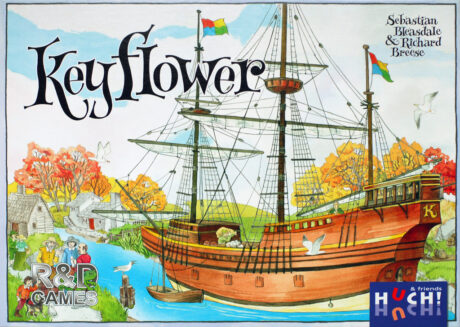
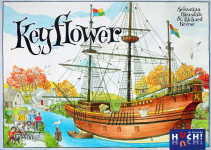
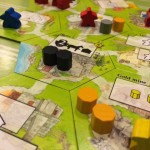
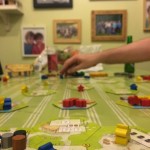
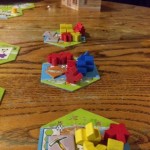
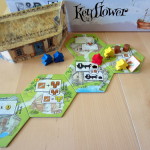
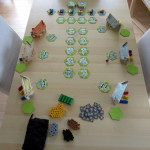
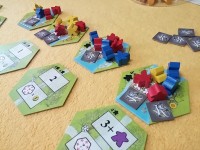
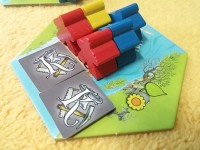
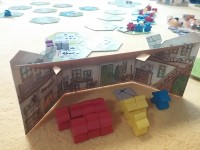


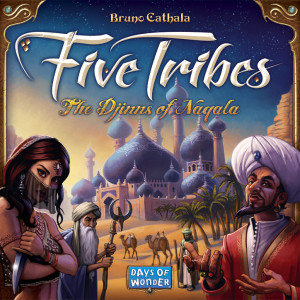

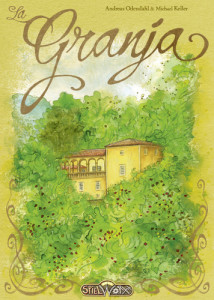
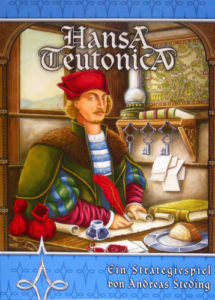
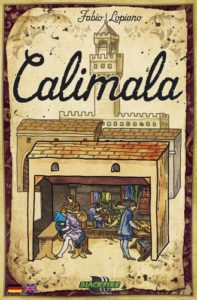
Sam says
Keyflower successfully marries different gaming mechanics: bidding and worker placement (send a worker out to do something for you) It can be fairly passive but it can - and will - get competitive if and when more than one player wants a certain hex. Play it a couple times and it begins to make sense - but the rather simple village-growing theme is adorned with an almost bewildering set of choices as to how to play, and repeat visits will reward those who love a real tactical puzzler.